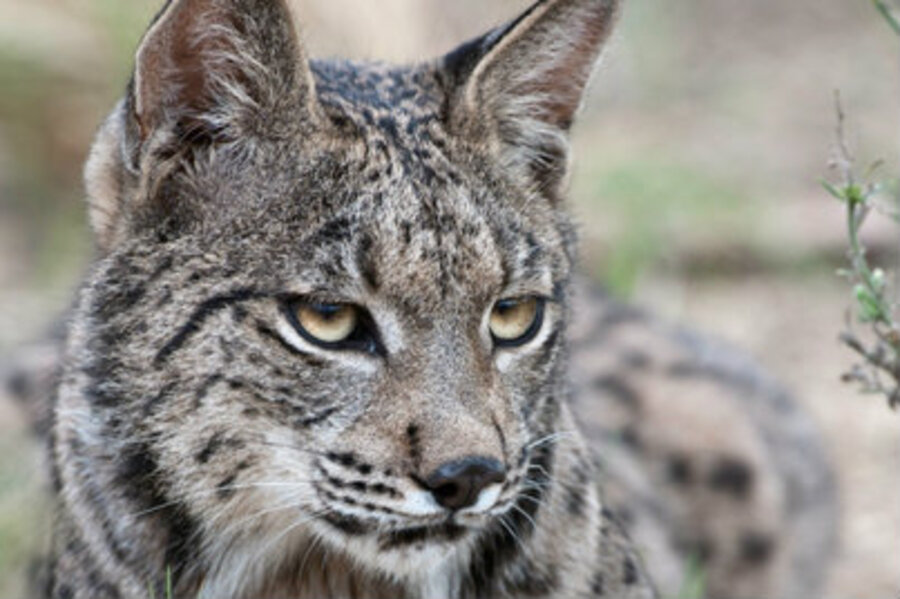Iberian lynx faces extinction in just 50 years, say scientists
Loading...
The Iberian lynx, the world’s most endangered feline species, could go extinct in just 50 years if conservation efforts are not adjusted to factor in climate change, says new research.
Despite the millions of dollars put toward saving the slinky cat, scientists say that current efforts have not accounted for the influence that shifting climate conditions will have on the distribution of the predator's main food source, the European rabbit. Saving the lynx will require incorporating Spain's changing climate into plans to relocate the cat into zones friendlier to population growth.
“Models used to investigate how climate change will affect biodiversity have so far been unable to capture the dynamic and complex feedbacks of species interactions,” writes Damien Fordham, a fellow at the University of Adelaide's Environment Institute and a co-author on a paper published in Nature Climate Change, in an email interview. “Conservation efforts show promise, but these efforts are likely to be wasted if the effects of climate change are not considered in reintroduction strategies.”
In the early 1800s, the Iberian lynx, a spotted, yellow-eyed predator with ears like two small pie servers, commanded large territories across Spain and Portugal. Since then, roads have sliced through the Spanish countryside, putting artificial boundaries on what was once an unfettered habitat and cutting the cat’s territory by about 95 percent. At the same time, the predator’s primary prey, the European rabbit, has dwindled in number, a victim of overhunting and disease.
Noting those serious threats to the lynx's survival, about $118 million in funding has been marshaled toward lynx conservation efforts since 1994, following a survey from the International Union for Conservation of Nature that identified the animal as among the world’s most critically endangered. Given those management efforts, the population has somewhat rebounded, especially over the past few years. The cat is now up from fewer than 100 individuals in 2008 to now just over 200, living in two communities in southern Spain.
Those conservation attempts largely focus on relocating the species to more food-abundant areas in Spain. But the efforts have not taken into account climate change’s complex toll of the geographic distribution of the rabbit, a point that could blunt their impact in just half a century, Fordham said.
Using ecological models that incorporated climate change’s influence on rabbit population patterns, scientists concluded that current management efforts will buy about 50 years for the struggling predator. That’s because climate change, at its current rate, is expected to outpace the cat’s transition to areas where the rabbit is expected to be more populous.
“Warmer and drier regional climates are likely to negatively impact the availability of habitat for the Iberian lynx and will cause shifts in the distribution of its main prey – the European rabbit,” said Dr. Fordham. “We forecast that these changes are likely to occur at too fast a rate for lynx to adapt.”
To save the lynx, scientists have proposed a relocation program that incorporates the influence of climate change on rabbit demographics. That would involve moving the cat to specifically identified higher-ground territories in Spain where models suggest that the rabbit will weather climate change and grow to populations sizable enough to sustain the lynx population.
“Relocations and intensive management of habitat and rabbit populations have worked as effective short-term conservation strategies,” said Fordham. “Survival of the species in the long term will require reintroductions to ecological refuges at higher latitudes or altitudes within the Iberian Peninsula.”
The new research on the lynx joins mounting attention to climate change and its affect on ecosystems’ food chains. Last week, researchers at the Monterey Bay Aquarium found that Great White Sharks depend on coastal California seals to fuel their entire thousands of miles long migration out to sea. Those seals are threatened by climate change, just as are the prey on which they feed. Researchers noted that conservation funding – which is mostly funneled toward directly protecting the shark – must also be put toward protecting its meals, too.
Attempts to preserve the wild lynx population would join redoubled efforts to encourage growth in captive cats. In February, embryos were removed from female Iberian lynxes at the Leibniz Institute for Zoo and Wildlife Research IZW, Berlin, Germany. Those embryos are now stored in liquid nitrogen at the Museo Nacional de Ciencias Naturales de Madrid for future use in breeding programs.








